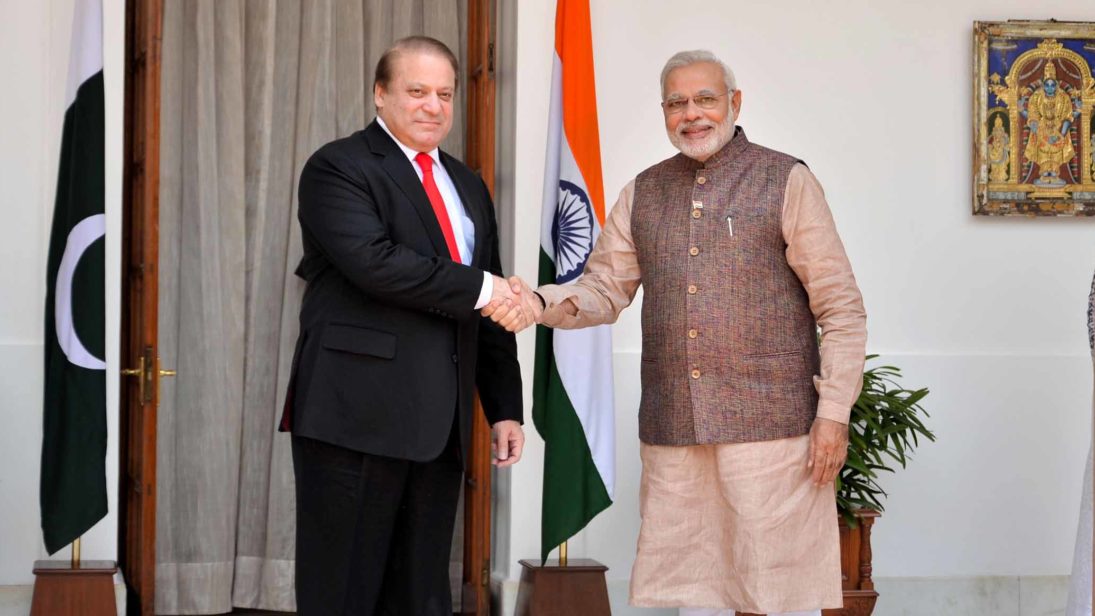
It looked as though 2014 was ending on the right note between India and Pakistan. There were some welcome gestures from the Indian side, which included the Indian PM, Narendra Modi’s phone call to his Pakistani counterpart Nawaz Sharif in the aftermath of the dastardly Peshawar attack which took the lives of over a 140 people, the majority of them children, and assurance of solidarity and support. Both Houses of the Indian Parliament, as well as schools across the country, observed 2 minutes of silence as a tribute to the victims of the attack. The Indian PM also sent birthday wishes to his counterpart on December 25. Interestingly, Sharif shares his birthday with former Indian PM, Atal Bihari Vajpayee, and sent a bouquet to the former PM.
All these developments were especially important, since from July-August onwards tensions have been on the rise and relations between both countries have been rather frosty.
There are a number of developments that have exacerbated tensions between both sides. In addition to multiple skirmishes between both countries across the LoC, JUD Chief Hafiz Saeed has been openly spewing anti-India venom in recent months in public gatherings, and reportedly received logistical support from the Punjab Government (Pakistan) for a two-day rally he held in Lahore in December. Top LeT leader and Mumbai mastermind Zaki Ur Rehman Lakhvi was also granted bail on December 18. He was detained however under the Maintenance of Public Order (MPO) act.
2015 too does not seem to have begun on the right note. An Indian Border Security Force (BSF) soldier and two Pakistan Rangers died on December 31, after cease-fire violations in the Samba Sector of Jammu and Kashmir. Apart from the death of the BSF soldier, a Pakistani boat loaded with explosives set itself on fire on the Gujarat coast, about 365 kilometres from Porbandar, after being intercepted by the Indian Coast Guard. Many argue that another 26/11 has been averted. According to Indian intelligence and security agencies, the boat was operated by LeT Militants and was planning to strike a naval installation in Porbandar.The Pakistani establishment was quick to respond, with the foreign ministry spokesperson Tasneem Aslam categorically stating, “I think this is a very silly allegation. We have checked with our authorities. No boat from Pakistan left for the place.”
All the above developments mean that 2015 is likely to be a challenging year for India-Pakistan ties, and the leadership of both countries will need to exhibit maturity and statesmanship, as well as a degree of boldness, to keep channels of communication open, if not resume a full-fledged dialogue.
The closure of dialogue and lack of engagement will only strengthen the naysayers on both sides, whether in the political establishment or in the media. While it is true that dialogue at the highest level is not desirable without proper preparation and in an inappropriate environment, both prime ministers have been elected with strong mandates, though it could be argued that Sharif has to contend with an increasingly assertive army and needs to take charge of the relationship. While raising expectations and high-level summitry may not be the answer, informal exchanges on the sidelines of multilateral summits like SAARC and the UN should not be avoided. PM Modi, who has reached out to world leaders as well as regional leaders, would not have lost anything by meeting the Pakistan PM on the sidelines of the UNGA, as well as having a more formal interaction on the sidelines of the SAARC Summit in Kathmandu.
While India needs to do its bit with regard to resumption of engagement with Pakistan, it is time for Islamabad to punish the perpetrators of 26/11 and stop distinguishing between different types of terrorism. In this context, certain substantive measures need to be taken in order to build trust – especially with regard to the expedition of trials against those involved in 26/11. A strategy of arm twisting India and becoming more aggressive on Kashmir without addressing India’s concerns on terrorism will not help the bilateral relationship in any manner. Both governments also need to realize that they cannot just follow public opinion, but at times have to shape it through their own vision. In addition to the governments, interaction between academics, journalists, and members of civil society is important, as it produces an alternative discourse which looks at relations from a more holistic prism rather than one single dimension.
In conclusion, while it is tough to predict the likely steps the two governments will take and the direction of India-Pakistan relations, not much can be expected in 2015 since both leaders have multiple challenges to address, with PM Sharif of course being far more precariously placed.
***